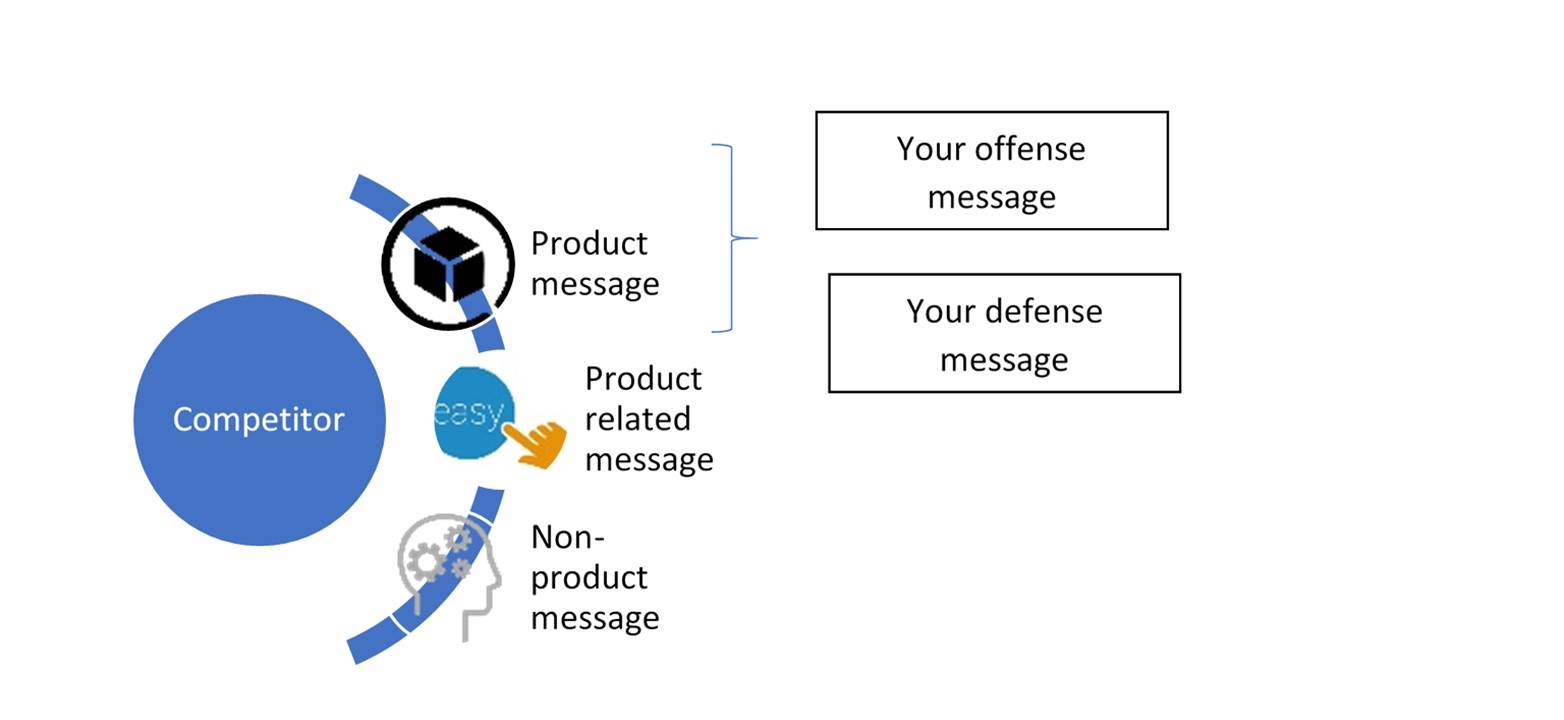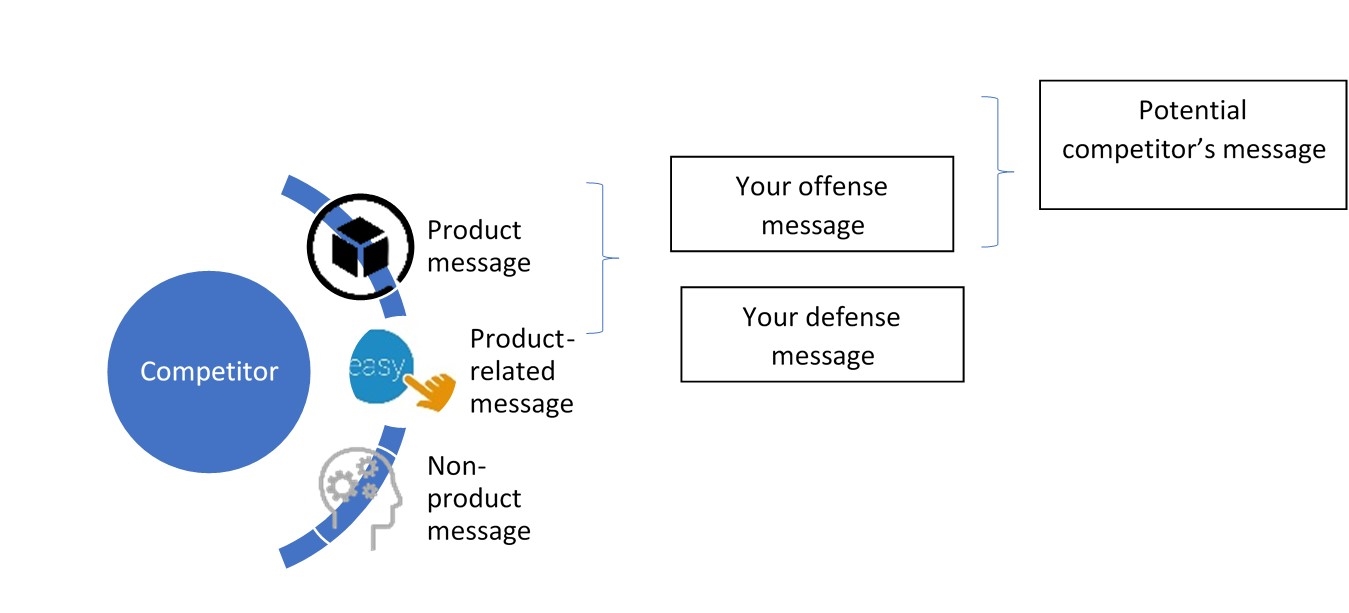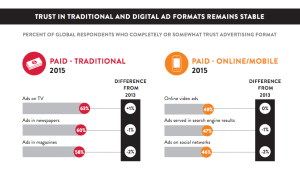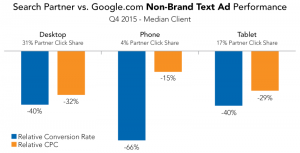One of Marketing’s primary jobs is to develop the positioning and messaging for the company and its products and services. The key messages and supporting points are often captured visually in what is referred to as a message map.
A quality message map serves as a tool to ensure consistent messaging cross-functionality internally and across channels and touchpoints externally, supporting your customer-facing teams and preventing them from being ambushed when they engage with prospects and customers. Examples of this would be sales personnel being told in a meeting with a prospect that they heard about an issue with the product from a competitor or your customer support team being informed by a long-term customer that the competition is questioning the quality of your service.
A comprehensive message map anticipates potential counter-messages by competitors. Marketing should incorporate potential competitor responses into the message map and include both offensive and defensive messaging. You’ll need to create your message map first. Then you can begin to create effective counter messages. If you’re new to creating message maps and counter messaging, here are five steps to get you started.
How to Create an Effective Counter Measures Message Map in Five Steps
We highly recommend using this approach in a workshop-style environment, ideally with an objective third-party facilitator.
- Key Messages. Before you create your map, you need to define your key messages. Key messages are the main points you want your target audience (influencers, customers, partners) to remember. Key messages should be clear and concise and explain what’s better and different about your company, why someone should buy your products, why they should partner with you, etc. Frame your messages and the supporting points from the perspective of the customer as much as possible. Now you are ready to consider how your competitors might try to ambush you.
- Consider Your Competitors. For each of your primary competitors and for each audience, answer the following:
- What is their primary product message and what evidence do they have to support the message? For example, this might be the material they use, if that’s unique and compelling, or it might have to do with their design of the product. Think features and functions here.
- What is their primary product-related message and what is their evidence? This is something that is needed to make the product work. Ease-of-use messages, warranties, or return or replace with no-questions-asked messages typically fall into this category.
- What is their primary non-product message and associated evidence? For example, deep domain expertise, technical training, or special certifications or licenses.
If you’re not sure of the answers to these questions, scour your competitors’ websites, read press releases and articles written about them, and check out their social media pages. If you have additional resources, invest in research and regularly conduct competitive audits.
Use this research to produce an image that looks something like Figure 1 for for each audience and competitor. This is the beginning of anticipating your competitors moves and your counter measures.

Figure 1: Message Map Illustration. VisionEdge Marketing, Inc.
- Prepare Your Responses. For each of your competitors’ messages, craft your offense message and your defense message. You’ll be creating something that resembles Figure 2.
For example, let’s say your competitor uses a product message that claims their product eliminates more impurities than your product with evidence to support their claim.
- Offense message: Your product is made of a material that can withstand temperatures between X and Y degrees, which applies to Z% of situations.
- Defense message: Your product exceeds the industry standard.

Figure 2: Message Map Counter Message: VisionEdge Marketing, Inc.
- Anticipate Competitor Countermoves. Now, begin to consider what your competitors might do or say next. Step into the shoes of each competitor and imagine what messages they might use to counter your points. Continue from one response and counter-response to the next until you feel you’ve addressed each of the potential moves. Add all of these to your message map.

Figure 3: Continue to expand on your map until you think you have anticipated the most likely moves and countermoves. VisionEdge Marketing, Inc.
- Finalize and practice. Once you’ve finished, you should have a picture that serves as a solid playbook for how to handle potential countermoves by competitors. Such a playbook is of no value if after you develop it, it remains unused. Integrate the message map into sales and customer support training and product demos. Incorporate it into your company presentations and content. Use the map as part of your employee orientation. Role-play with your team to practice using the message map so they are prepared when those uncomfortable moments in a conversation surface, such as when a prospect brings up a competitive message.
How Your Map Helps You Go on the Offense
There’s another valuable purpose of this kind of message map: it creates an opportunity for you to lay landmines and ambushes for your competitors.
As you create your map, you’ll be identifying important holes in your competitors’ messaging that you can exploit to your advantage. While brainstorming ways to counteract their criticism with product-to-product messages, you might find that you have strengths in areas where they are weak. For example, perhaps your map reveals that you are stronger in the onboarding or implementation process. Explore how you can use this information to go on the offense. This approach enables you to turn the message map you’ve created into a competitive weapon.
Business & Finance Articles on Business 2 Community
(16)







